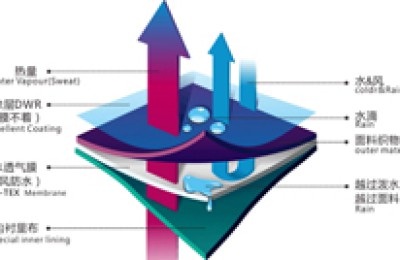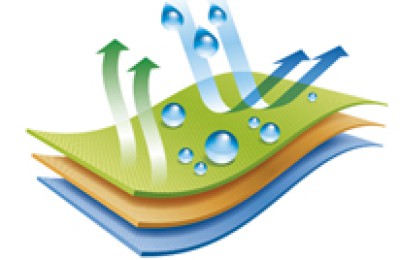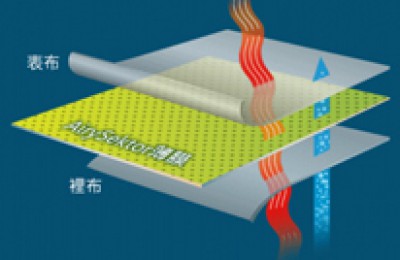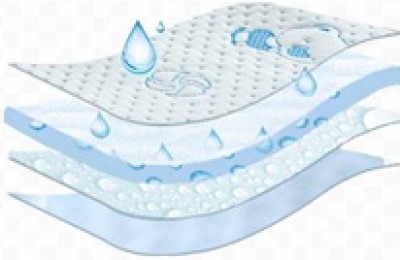As the world’s largest textile exporter, the textile and apparel industry is my country’s traditional advantageous industry. However, the growth rate of China’s textile and apparel exports fell sharply in each month of the first quarter, and the monthly export volume showed a month-by-month decrease that has been rare in recent years. Data show that in January this year, textile and clothing exports increased by about 16% year-on-year, but in February exports declined. Exports in March were only US$12.56 billion, the lowest value for the same period in the past five years, with a year-on-year decrease of 32.6%.
In recent years, the market has been sluggish, costs have risen, the gap between domestic and foreign cotton prices has widened, and the growth of developed markets such as Europe, the United States, and Japan has been lower than expected, causing most textile and garment export companies to feel unprecedented survival crises and development pressures. The development of China’s textile and garment industry Comparative advantages are gradually disappearing. In order to compete for orders in the fierce competition, many textile and apparel companies have moved their manufacturing bases to Southeast Asia where production costs are lower.
Southeast Asia’s low-cost advantage attracts companies to “move”
At present, the labor cost of my country’s textile industry is on average 1-3 times higher than that of Southeast Asian countries, and the cost of cotton is more than 30% higher. It is understood that the labor cost in Bangladesh is US$0.22/hour, in Cambodia it is US$0.33/hour, in Vietnam it is US$0.38/hour, and in my country it is US$1.08/hour. Jiangsu Lianfa Textile Co., Ltd., which invested in Cambodia and established three garment factories in advance, revealed that the main advantages of setting up garment factories in Cambodia are cheap labor and low overall costs. For example, the monthly salary of workers in Cambodian garment enterprises is about US$100. The same garment factory with thousands of people can save 20 million yuan in costs every year compared with domestic ones. Compared with the domestic market, the price difference between domestic and foreign cotton per ton is 4,000 to 5,000 yuan, and raw cotton alone requires higher costs. At the same time, labor costs are rising steadily year by year. As a traditional labor-intensive industry, textile and clothing enterprises have labor costs increasing by 15% year by year, and they often encounter labor shortages.
At the same time, the success of some textile and apparel companies that went global early has also given more textile and apparel companies the urge to go global. Relevant data shows that in recent years, more than 30 Fujian Quanzhou companies have gone abroad to invest and set up factories in Southeast Asia. Last year, Quanzhou’s exports of textile fabrics and textile machinery equipment to ASEAN reached US$451 million and US$176 million, a year-on-year increase of 33.1% and 21% respectively. . These companies that first invested in Southeast Asia have made profits both at home and abroad, attracting more companies to visit Southeast Asia for on-site inspection and investment.
Second, Southeast Asian countries can enjoy the GSP policy of developed countries
Canada, the European Union and other countries and regions have completely stopped the preferential treatment of the Generalized System of Preferences for my country’s export products, and it has become an inevitable trend for other countries to “graduate” from the Generalized System of Preferences to my country. At the same time, developed countries such as Europe and the United States continue to grant GSP treatment to Southeast Asian and other countries. According to reports, Southeast Asian and other countries only need to levy 2% to 3% import tariffs on textiles exported to the EU, while Chinese textiles exported to the EU need to levy about 12% tariffs. Recently, Vietnam will sign the Trans-Pacific Partnership (TPP) and the Vietnam-EU Free Trade Agreement, and tariffs on Vietnam’s products exported to the EU will be reduced to zero. Bangladesh has a 10-year income tax reduction and exemption policy for foreign-invested textile enterprises and a tax reduction and exemption policy for the ASEAN Free Trade Area. In this context, domestic textile and apparel companies that transfer production capacity to Southeast Asia can enjoy the GSP benefits of Europe and the United States and other countries, effectively reducing export costs.
Building factories in three Southeast Asian countries can effectively avoid foreign trade frictions
Currently, my country is facing a high incidence of trade friction cases. Trade barriers represented by technical standards, intellectual property rights, and tariffs are emerging one after another, and their intensity is getting stronger. The losses caused to enterprises cannot be ignored. Chinese textile and apparel companies can also circumvent trade barriers in developed countries such as Europe and the United States by investing in and setting up factories in Southeast Asia. In recent years, countries such as Europe and the United States have frequently imposed restrictions on my country’s exports of textiles and clothing, and trade conditions have become increasingly stringent. According to statistics, from 2012 to the present, there have been about 17 trade friction cases involving textile exports. The products involved generally export more raw materials and semi-finished products and relatively less finished products; most of them are cotton and cotton blended textiles, cotton thread products, and clothing. And accessories, nylon filament, polyester filament, chemical fiber cloth, linen fabric, elastic yarn, etc. Companies can avoid the risk of textile quota restrictions by setting up factories in countries such as Thailand, the Philippines, Cambodia, Malaysia and Myanmar, and using quotas from ASEAN countries to export to consumer markets such as Europe and the United States.
The overseas transfer of China’s textile manufacturing industry has become a general trend, and the transferred companies are spreading from clothing to the upstream of the industrial chain, such as yarn, dyeing and finishing. Although the transfer of the textile and apparel manufacturing industry is an inevitable result of the transformation of my country’s textile industry, the inspection and quarantine department recommends that companies should think calmly and act cautiously before choosing to transfer. As far as the current situation is concerned, textile and apparel companies moving to Southeast Asia face risks such as policy risks, imperfect supply chains, gaps in infrastructure and worker quality, etc. my country’s textile industry has entered a new stage of transnational layout. The entire industry will actively and steadily “go out” to build a transnational supply chain and maintain sustainable competitive advantages. At the same time, it will achieve global expansion through brand, technology, and market channel expansion or cooperation. Improve the position of the global industrial value chain.





